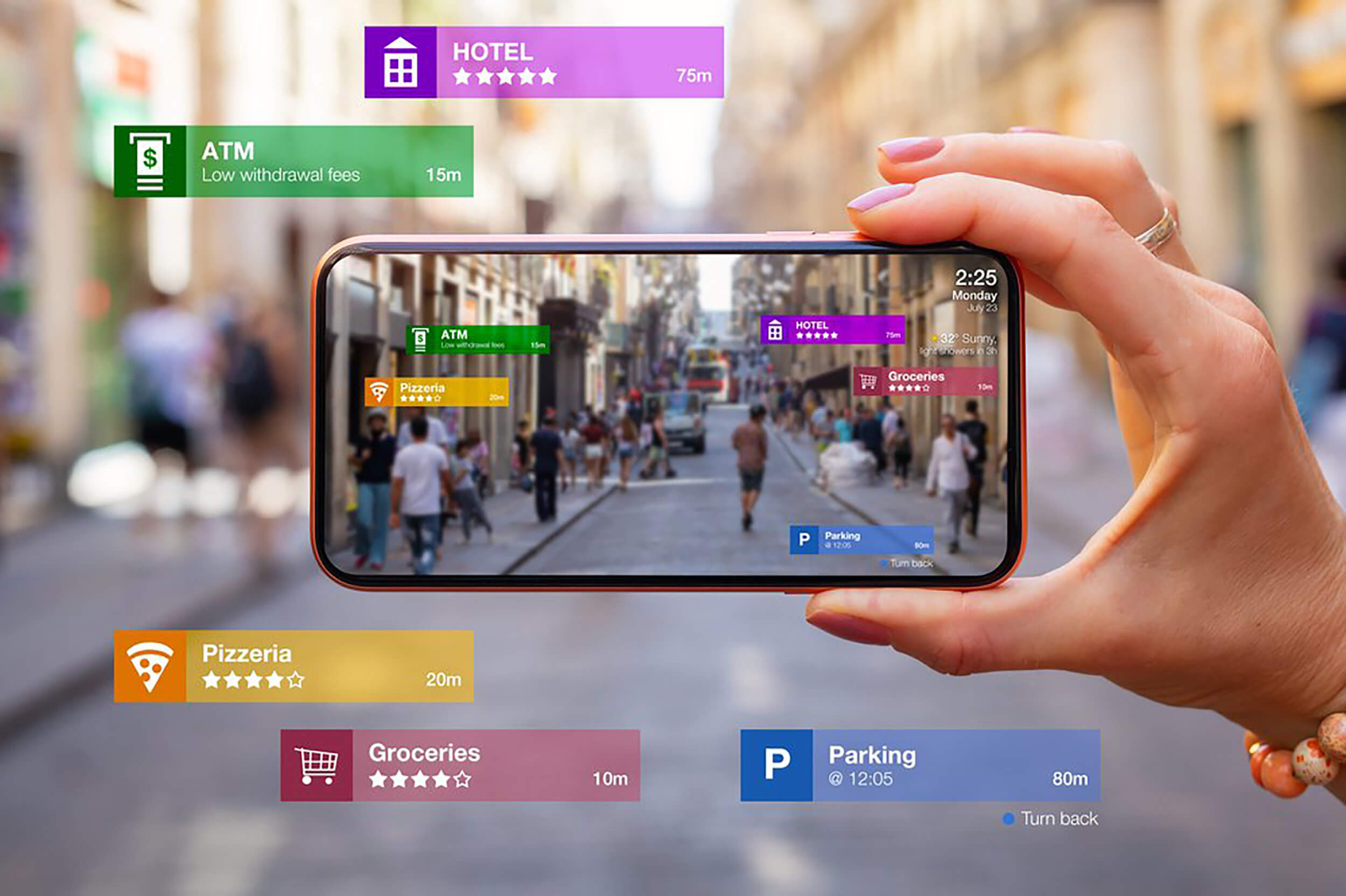What is Augmented Reality (AR)?
Augmented Reality (AR) is the integration of digital information with the real world.
Unlike Virtual Reality (VR), which creates a fully artificial environment, AR enhances the existing environment. It does so by overlaying digital content such as images, sounds, and text in real time.
From Snapchat filters to advanced surgical simulations, AR has already begun weaving itself into everyday life.
But this is just the beginning. As technology advances, Augmented Reality is poised to revolutionize how we interact with the world around us.
How Augmented Reality is Transforming Different Industries
1. Retail and E-commerce
AR is providing shoppers with a personalized and interactive shopping experience.
Apps like IKEA Place allow customers to see how furniture will look in their homes before making a purchase.
Virtual fitting rooms let users try on clothes and accessories digitally.
Benefits include:
- Higher customer engagement
- Reduced product returns
- Increased confidence in purchasing decisions
- Nigeria Declares Public Holiday Today
- Fluminense vs. Cruzeiro – A Deep Dive
- AFCON: South Africa vs Mali
- FIFA CLUB WORLD CUP FINAL: Chelsea FC VS PSG
- Muhammadu Buhari Former Nigerian President, Dies at 82
2. Education and Training
AR is reshaping education by making learning more interactive and engaging.
Imagine history lessons where students can walk through ancient civilizations or biology classes where organs come to life in 3D!
In professional settings, AR is used for:
- Employee training simulations
- Technical skill development
- Virtual campus tours
3. Healthcare and Medicine
In healthcare, AR is saving lives and improving medical education.
It allows surgeons to project images of a patient’s internal organs during operations. This leads to more precise and less invasive procedures.
Other healthcare uses:
- Patient rehabilitation exercises
- Medical training and education
- Remote diagnosis through AR-powered tools
4. Real Estate and Architecture
With AR, potential buyers can take virtual property tours without being physically present.
Architects use AR to visualize designs at full scale before construction begins, identifying potential issues early.
This technology is drastically improving decision-making and reducing costs in real estate and construction industries.
5. Entertainment and Gaming
AR is transforming the entertainment industry, especially gaming.
Games like Pokémon GO became global phenomena, blending virtual elements into real-world environments.
In film, television, and live events, AR is used to create richer storytelling experiences. These experiences are more immersive and captivate audiences like never before.
Benefits of Augmented Reality
- Enhanced User Engagement:
AR makes interactions more memorable and meaningful, leading to higher user satisfaction. - Increased Efficiency:
Industries like manufacturing and logistics are using AR for real-time information and guidance, boosting productivity. - Cost Reduction:
Virtual prototypes and training reduce the need for expensive physical models and real-world sessions. - Accessibility:
AR is bridging the gap between physical limitations and technological access, making complex tasks easier for all users. - Innovation and Brand Differentiation:
Companies leveraging AR stand out in competitive markets by offering unique and futuristic experiences.
Challenges Facing Augmented Reality
While AR presents exciting opportunities, it also faces hurdles:
- Hardware Limitations:
High-quality AR experiences require powerful, yet lightweight, devices — an ongoing technical challenge. - Privacy and Security Concerns:
Since AR collects data from the real world, privacy protection and cybersecurity become critical issues. - High Development Costs:
Creating AR content and platforms can be expensive and time-consuming. - User Adoption:
Some users still find AR experiences disorienting or unnecessary, making mass adoption gradual.
The Future of Augmented Reality
The future of AR looks incredibly promising.
With the rise of 5G networks and advancements in AI, AR will become even more responsive, accurate, and accessible.
Key trends include:
- AR Glasses and Wearables:
Apple, Meta, and Google are racing to create sleek AR glasses. These glasses are designed to blend into daily life. - Integration with AI:
AR will increasingly use artificial intelligence to provide smarter, more adaptive experiences. - Expansion Across Industries:
Healthcare, automotive, retail, education, and more will continue to find new and exciting uses for AR. - Mixed Reality (MR) Evolution:
The blending of AR and VR into MR. This fusion will create more seamless transitions between the real and digital worlds.
According to experts, the global AR market size could reach over $100 billion by 2030, demonstrating its massive potential.
Dailymore Analyst A New Era of Reality
Augmented Reality is no longer a futuristic fantasy. It is an evolving technology. It enhances the way we live, work, learn, and play.
From healthcare breakthroughs to unforgettable gaming adventures, AR is setting the stage for a new era of human interaction.
As industries invest more into AR development, the line between reality and digital will continue to blur. Consumers are embracing immersive experiences. This will create limitless opportunities for innovation, growth, and transformation.
Discover more from Dailymore News
Subscribe to get the latest posts sent to your email.





